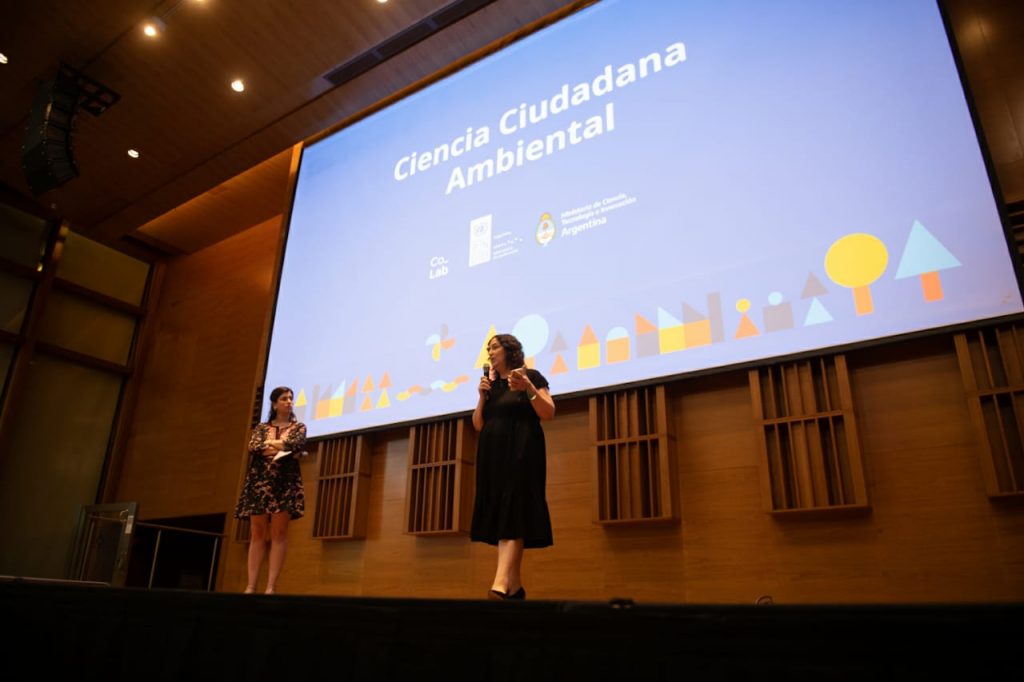Environmental Citizen Science: 30 Collaboration, Experimentation, Learning and Knowledge Projects for Sustainable Development

The Ministry of Science, Technology and Innovation (MINCyT) and the United Nations Development Program (UNDP), represented in Argentina by Co_Lab – Acceleration Laboratory, presented 30 environmentally focused local citizen science initiatives that develop tools to solve problems, measure and act upon them. Different types of phenomena and issues in the territory. The catalog collects the files of each project that allow to characterize the ecological citizen science in our country today (what types of projects are there, what areas are involved, how many people are involved in the projects, what tools they use, what geographies they develop, what academic institutions they participate in and other important questions). The initiative collaborates with public policy development, and seeks to inspire and add new volunteers to ongoing community research. At the opening, the event was attended by the officials, National Director of Programs and Projects for the U.S. Department of State’s Under Secretary for Institutional Evaluation, Maria Guillermina Donofrio, and Head of Mapping Solutions at the UNDP Acceleration Lab in Argentina, Maria. Veronica Dark. To view the catalog go to https://www.argentina.gob.ar/sites/default/files/ciencia_ciudadana_ambiental_-_mapeo_de_iniciativas_nacionales.pdf
During the presentation, Donofrio stated: “Citizen science is a method of knowledge-making that involves the active and extended participation of communities throughout the entire research process (collecting, monitoring and working with research teams). 60% of the initiatives have a focus dedicated to the land problem in Argentina, and 40% other, global in scope.” The director thanked the participants and the officials present, including the Minister of Science, Daniel Filmus.
For his part, Moreno noted that it was a “co-creation process between the two parties. We think about it, discuss and get to know each one by contacting the national ecosystem references; then, like a snowball, one led to the other and we turned to technical reports and various sources; during the process We thought about how to translate it and it was important to involve the project leaders. We consult with them and start with the germ sheet. We wanted a product that was easily readable and accessible to various interlocutors, officials and decision makers. We came up with a downloadable product (in Spanish and English), which appeals to diverse audiences. We want Inspiring others and the only way is to make the maps and solution set visible.”
Scientific Technological Society. D´Onofrio and Moreno presented aspects of the projects, allowing us to identify challenges and opportunities. Among them, they noted the limited diversity of the institutions involved (CONICET, Universidad de La Plata, and Córdoba; INIDEP, INTA, among a few others); This is not so, the great diversity of disciplines and multidisciplinary, the most important of which is the natural sciences. Regarding funding sources, there is no definite source for the topic, and the investment comes from scientific organizations and local governments, but it was initially dedicated to other work, international funding, and its own resources. “There is a lot to work on in that line,” Donofrio said. The main themes of the projects are health and wellbeing, sustainable communities, quality education, water and sanitation, and climate action, and much of what led to their implementation was motivation, children, the communities themselves, beliefs (activity), and monitoring. component.
Environmental Citizen Science in Numbers
90% of projects are in progress
60% of projects are more than 5 years old (some even started in a pandemic)
53% of citizens contribute to data production
37% of the projects involved more than 1,000 people
Three projects in the first person. In the second group – moderated by MINCyT’s Undersecretary for Institutional Evaluation, Humberto Cisale, and UNDP Environment and Sustainable Development Program Coordinator, Maria Eugenia de Paula – involved those responsible for three projects that make up the catalog, who shared experiences and challenges on the projects: Maria Cimartin, from Obzerba Residence, a joint venture for the management of household waste; Soledad Ceccarelli, of GeoVin, an application that seeks to create an updated database on the geographical distribution and prevention of vinchocas, and Jorge Aliaga, of linkage and technology transfer for the solidarity production of carbon dioxide meters, a collaborative project to monitor indoor ventilation by measuring carbon dioxide (CO2) . “The element of federalism in projects and citizen science has no owner, belongs to everyone. The initial observation of a person becomes technical and improves the way of life,” explained Cecil.
In the end, Hinge Secretary, Juan Pablo Paz, noted, “This model is not as episodic as something open and community focused. There are problems that are difficult to solve without citizen knowledge. The challenge we face from MINCyT is to design strategies with greater interaction with county governments. We In a position to take on more ambitious projects, giving it the scale of the program” and it lent its support to the initiative.
In turn, the Resident Representative of the United Nations Development Program in Argentina, Claudio Tomasi, highlighted the joint efforts and more than 15,000 people who participated in the mapping. “Citizen science – federal and democratic – reinforces that problem analysis must become reality. Human development is based on human empowerment. What we are talking about today is related to COP26, and sustainable development. Knowledge is power.”
Learn more about the initiative Citizen science Enter https://www.argentina.gob.ar/ciencia/sact/ciencia-ciudadana
The catalog containing 30 local projects is attached.

“Future teen idol. Hardcore twitter trailblazer. Infuriatingly humble travel evangelist.”




:quality(85)/cloudfront-us-east-1.images.arcpublishing.com/infobae/BNGH73UCKQAZSQPCODUWO2BE5Y.jpg)





